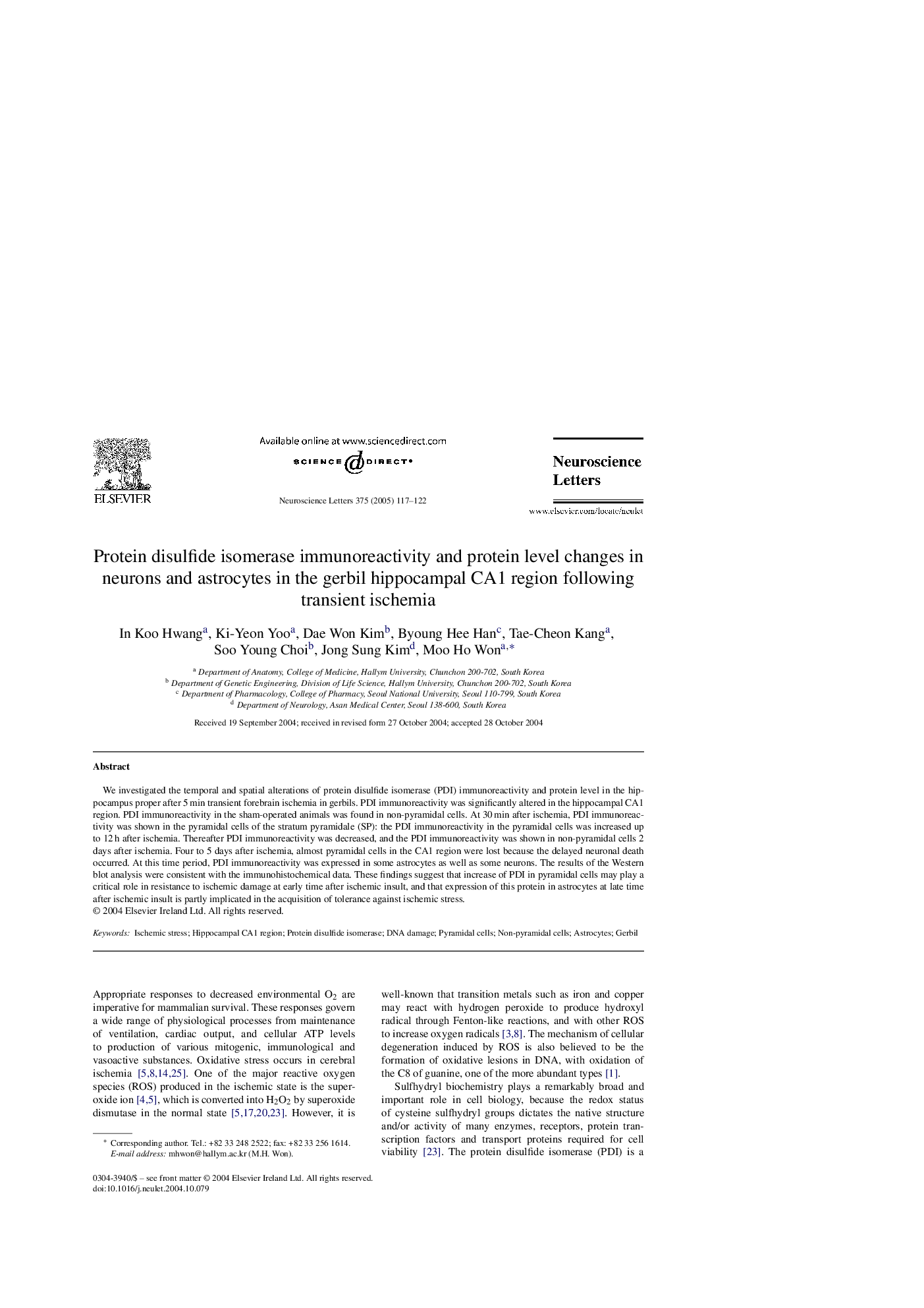| Article ID | Journal | Published Year | Pages | File Type |
|---|---|---|---|---|
| 9429493 | Neuroscience Letters | 2005 | 6 Pages |
Abstract
We investigated the temporal and spatial alterations of protein disulfide isomerase (PDI) immunoreactivity and protein level in the hippocampus proper after 5Â min transient forebrain ischemia in gerbils. PDI immunoreactivity was significantly altered in the hippocampal CA1 region. PDI immunoreactivity in the sham-operated animals was found in non-pyramidal cells. At 30Â min after ischemia, PDI immunoreactivity was shown in the pyramidal cells of the stratum pyramidale (SP): the PDI immunoreactivity in the pyramidal cells was increased up to 12Â h after ischemia. Thereafter PDI immunoreactivity was decreased, and the PDI immunoreactivity was shown in non-pyramidal cells 2 days after ischemia. Four to 5 days after ischemia, almost pyramidal cells in the CA1 region were lost because the delayed neuronal death occurred. At this time period, PDI immunoreactivity was expressed in some astrocytes as well as some neurons. The results of the Western blot analysis were consistent with the immunohistochemical data. These findings suggest that increase of PDI in pyramidal cells may play a critical role in resistance to ischemic damage at early time after ischemic insult, and that expression of this protein in astrocytes at late time after ischemic insult is partly implicated in the acquisition of tolerance against ischemic stress.
Keywords
Related Topics
Life Sciences
Neuroscience
Neuroscience (General)
Authors
In Koo Hwang, Ki-Yeon Yoo, Dae Won Kim, Byoung Hee Han, Tae-Cheon Kang, Soo Young Choi, Jong Sung Kim, Moo Ho Won,
